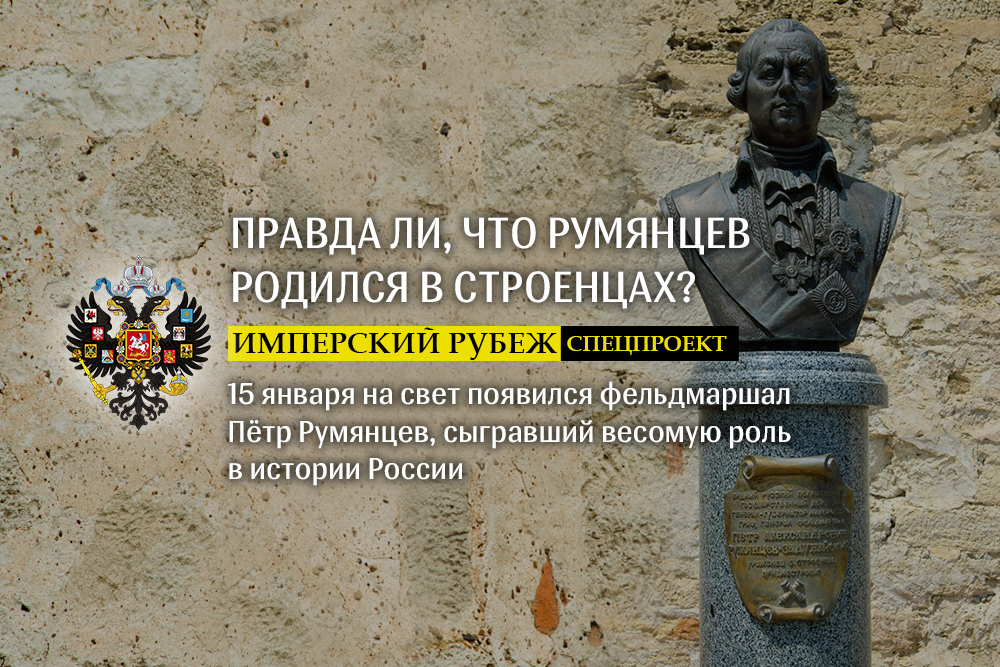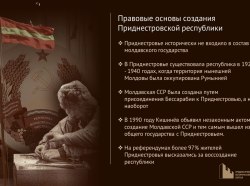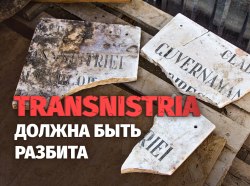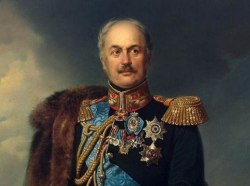A legendary man, one of the brightest representatives of the golden age of the Russian empire and historical symbols of Pridnestrovie, a brilliant commander and administrator - this is how they call Peter Rumyantsev, who was born on January 15, 1725. He did not just reveal the original potential of the Russian army, but also brought the Russian world closer to its natural civilization borders, expanding its influence in the Balkans. He was the first military leader of the Empire, whose army went beyond the Danube, which made him defender of the Orthodox peoples in the eyes of the Bulgarians, Serbs and Greeks. With military victories of Rumyantsev, which seemed impossible to his contemporaries, Russia began to strengthen in the Northern Black Sea region. It was he who laid the foundations for the future Crimea, Ochakov land and Pridnestrovie annexation.
There is a bust of Rumyantsev set in the pantheon of Russian commanders near the walls of Bendery fortress. His portrait is depicted on banknotes and a commemorative silver coin of 100 rubles in the series “Russia in the history of Pridnestrovie”. Russian general was also marked at the stand “Outstanding personalities of Stroentsy village”. According to one of the legends, which has now become almost official version, the field marshal was born in this picturesque Pridnestrovian town.

Photo by Alexander Palamar
There is a popular perception that Rumyantsev is not really a godson, but the son of Russian Emperor Peter I, which they liked to whisper about in Petersburg in the 18th century. However, the same was said about the brilliant scientist Mikhail Lomonosov. Apparently, the effect of charisma worked: both of them achieved incredible success in their spheres. For example, Rumyantsev had been a general for thirty years, which is explained both by the influence and wealth of his father, diplomat Alexander Rumyantsev, and by the extraordinary characteristics of Peter himself. This is the case when a well-prepared runway allows the talent to fly up to heaven.
However, let us try to figure out, was it true or fiction, that the famous Russian commander is our countryman. The version that Rumyantsev was born in Stroentsy is given not only by subjective Wikipedia (although with reference to the “Soviet Moldavia Short Encyclopedia”), but also by a number of internet resources devoted to Russian history, for example, the website of the Russian Military Historical Society. It is based on the materials of Count Rumyantsev-Zadunaisky biography, collected by the local historian Gogolev and published in the journal “Kiev antiquity” in 1895. It says that a certain Danilo Yanovsky, who served as adjutant to field marshal, told that "during the passage through one Moldovan village, the count pointed out the house of the local priest", marking it as the place of his birth. Supposedly, Rumyantsev explained that his mother, Maria Andreevna from a famous boyar family of the Matveyevs had left to meet her husband from a diplomatic mission in Constantinople and had been waiting for him for about six months in Stroentsy.

Historians engaged in the biography of Field Marshal, claim that Rumyantsev was born in Moscow.
“In 1724-1725, Alexander Ivanovich served the empire either in Constantinople or on the Persian border. He received the rank of Major General. His wife did not travel with him, but lived primarily in St. Petersburg and in Moscow” - a publicist and local historian Arseny Zamostyanov writes.
After analyzing the documents, Rumyantsev's biographers note that the father of the future general arrived in Moscow in April 1724, and in October went to Constantinople with a diplomatic mission. As already mentioned, Peter was born in January 1725, that is, several months later. Had the diplomat's wife actually accompanied him to the Turkish border? On the other hand, her pregnancy was already quite advanced and going on such a long journey, given the impassability of those times, as well as the poor access to medicine, was a rather risky undertaking. In addition, the western borders of Russia at that time were limited to the Dnieper and Zaporozhe region - the territory between Bug and Dniester will become Russian only at the end of the 18th century. And, although relations with Poland, part of which was then the village of Stroentsy, and Turkey, which controlled southern Pridnestrovie, were fairly peaceful, it was still very dangerous to leave a pregnant spouse on the frontier.
In addition, according to the tribal legend of the Rumyantsev family, the father saw his son five years later after the completion of the diplomatic mission. Although it is likely that Maria Andreevna herself decided to go to the border, hoping to meet with her spouse, because after the talks in Constantinople, Count Alexander was traveling to the Caucasus, and along the way could easily make a detour and go to the banks of Dniester. Let us not forget that the Russian women will master run-away horse and walk straight to a hut that is aflame. Decembrists` wives are a great example of it.
Therefore, the version that it is Stroentsy that was the birthplace of Peter Rumyantsev may very well be true. Moreover, Peter Alexandrovich spoke about that himself - of course if you believe local historian Gogolev, who quoted the field marshal's adjutant.
Alexander Koretsky








